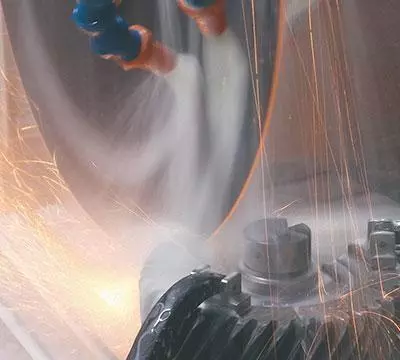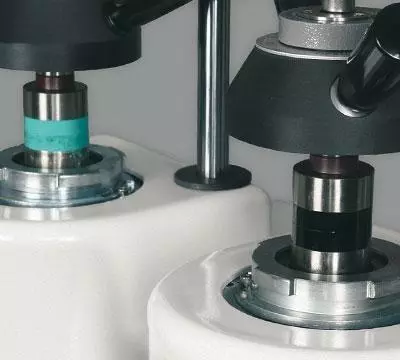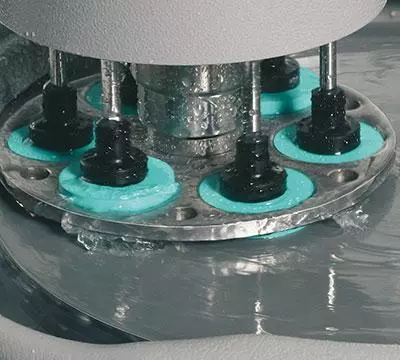What is Materials Science?
Materials science is a field of study that explores the structure, properties, and performance of materials. This interdisciplinary field encompasses physics, chemistry, engineering, and other sciences to understand the microstructure of materials and their behavior under various conditions.
Importance of Materials Science:
Materials science plays a vital role in determining the reliability and safety of various products, including aerospace components, medical devices, and automobiles. The study of materials microstructure helps identify the reasons behind material failures and design better materials for specific applications. Understanding the properties and performance of materials is essential for improving product design, reducing costs, and enhancing overall product quality.
The proper preparation of metallographic specimens is essential to obtain accurate information about a material's microstructure. The following steps are involved in preparing metallographic specimens for analysis:
Sectioning and Cutting: Sectioning and cutting involve preparing a sample of the material by cutting it into a suitable size and shape for further analysis. This step is crucial as it must not alter the microstructure of the material being examined.
Mounting: Mounting involves affixing the sample to a mount using a suitable adhesive, typically a thermosetting resin, to facilitate grinding and polishing. The mount must provide enough support to ensure the sample remains flat during preparation.
Grinding: Grinding is the process of reducing the sample's thickness through a series of abrasive grits to obtain a smooth and flat surface. This step requires a suitable grinding machine and abrasive paper.
Polishing: Polishing involves removing the scratches from the grinding step and producing a mirror-like surface. This step uses successively finer abrasive grits and polishing compounds.
Final Polishing: Final polishing involves using a colloidal silica suspension to produce a mirror-like finish with minimal damage to the microstructure.
Etching: Etching involves applying a chemical reagent to the polished surface to reveal the microstructure. The type of etchant used depends on the material being analyzed and the information required.
Microscopic Analysis: Microscopic analysis involves examining the polished and etched surface under a microscope to identify the microstructure's features, such as grain boundaries, second phases, and segregation effects. This step requires a trained metallographer and an appropriate microscope.
Hardness Testing: Hardness testing involves measuring the material's resistance to indentation, which correlates with its strength and other mechanical properties. This test is an essential step in the analysis of the microstructure.
Microstructures
The microstructure of a material is the arrangement of its constituent atoms, crystals, or molecules at a microscopic scale. Metallographic Examination is a crucial technique used in materials science to analyze the microstructure of metals and alloys. An experienced Metallographer can gather information on the material's identity, composition, and thermomechanical history by observing its microstructures at suitable magnification and using appropriate etching reagents.
Classification of Observations
When examining a microstructure, it is convenient to classify observations in terms of color, grain size and shape, second phase shape, size and distribution (including porosity), and segregation effects. These observations provide valuable information about the material's properties and performance.

Color - In the unetched state, the color of a material can provide useful information about its composition. For example, pure copper appears pinky-red, while brasses with higher zinc content appear yellow. Phosphor bronzes may display an opalescence or iridescence when etched.
Grain Shape - Grain shape and size are important indicators of the cooling rate or annealing temperature of a metal. Elongated columnar grains growing in from the side of the mold indicate a slowly cooled cast structure, while grains with regular and uniform shape are termed polyhedral or equiaxed. Grain size may be referred to as coarse (>1mm and visible to the naked eye) or fine (10µm - 1mm). When metals undergo deformation, their grains become elongated in the direction of the applied force and may display strain bands when subjected to etching. This is a clear indication of deformation in the material. Some fcc metals such as a-brass exhibit annealing twins, which are bands of material across the grain in which the two parts are oriented symmetrically about an axis as mirror images of one another.
Segregation - Segregation refers to the inhomogeneity of solute within a material. If primary grains display differential etching, it suggests that the solute is either non-uniform or has core-like structures. Cast alloys with a broad melting range typically exhibit this type of non-uniformity, and it can manifest as a dendritic or fir-tree pattern in the primary phase during solidification. The dendritic skeleton may contain branch-like structures with interdendritic porosity or sponginess. Spherical coring may be present in some alloys.

Second Phase Shape, Size, and Distribution - The second phase in a material usually appears as a duplex structure in which there is an intimate mixture of primary or secondary phases formed by a eutectic reaction, eutectoid reaction, separation from a saturated solid solution on continuous cooling, or by an isothermal aging treatment. Eutectic structures exhibit a variety of morphologies including lamellar (or plate-like), acicular (needle-like), and rod-like. In some systems, the eutectic or eutectoid structure is given a special name, such as pearlite in steels or Chinese script eutectic in Al-Si alloys. In cases where the growth of the primary phase is halted by a subsequent eutectic or peritectic reaction, the original growth morphology of the primary phase is exposed and retained within the microstructure. Precipitation from the primary phase is often in the form of platelets along crystallographic directions, which in α-ß brasses particularly is referred to as a Widmanstatten structure.
Inclusions - Inclusions refer to a dispersed second phase that is not formed by a precipitation reaction. They are not taken into solution by hot working and align in stringers parallel to the working direction. For example, manganese sulfides in steels or CuO in tough pitch copper may give rise to laminations.
Porosity - Porosity refers to the presence of voids within a cast microstructure, which can include a central cavity resulting from a primary or secondary pipe. Gas is a common cause of blow holes, pin holes, or cavities, which tend to seal during working.
Special Terms - When referring to graphite morphology in cast irons, special terms are used such as flake, vermicular (resembling worms), or nodular (spherical). Additionally, second phase materials may be described as fibrous (as in α-ß brass) or rosette (referring to the Fe-rich phase in manganese bronze).




